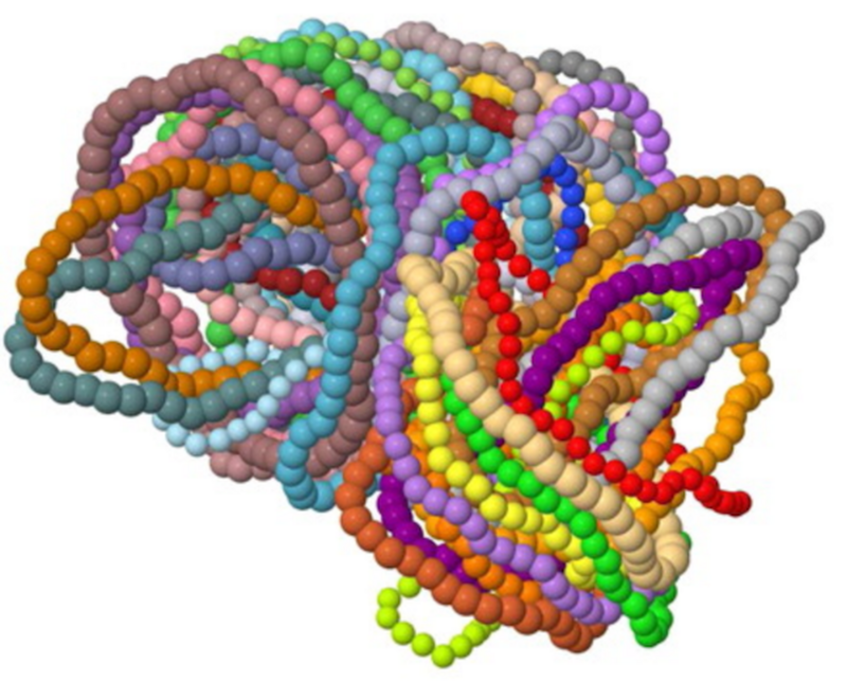Macromolecular aggregates
Team members
- M. Arndt, A. Bismarck, L. González, S. Kantorovich, C. Likos and DCAFM fellows.
Dissertation Projects
- Photophysics and magnetism in macromolecules (Arndt)
- Simulation of light-induced dynamics in complex molecules (González)
- Hydrophobically modified block-copolymer aggregates for turbulent drag reduction (Bismarck)
- Self-assembly and dynamic response of supracolloidal magnetic polymers (Kantorovich)
- The role of ring-polymer topology in macromolecular self-assembly and dynamics (Likos)

Semiflexible ring-polymers forming
a glassy cluster phase [1].
Phenomena studied in the five dissertation projects of this research area range from the optical properties of organic molecules in the gas phase to topological effects in the self assembly of polymers, building a bridge from the molecular quantum optics to materials science. The projects of M. Arndt and L. González are centered on the photo-physics and photo-chemistry of complex biomolecules in the presence of electric and magnetic fields, building on the expertise of these groups in matter-wave interferometry [2] and non-adiabatic molecular dynamics simulations [3]. Moving up length and time scales, in the project of C. Likos computer simulations will be used to study cluster phases arising in assemblies of ring-polymers with and without additives such as magnetic filaments and carbon nanotubes. In a related experimental dissertation project, Bismarck and his PhD student will synthesize tailored block-copolymers which aggregate in aqueous media with the aim to investigate the formation of macromolecular aggregates under shear stress interacting with a turbulent pipe flow. Finally, S. Kantorovich and her student will investigate how super-colloidal magnetic polymers self-assemble and how they respond to external perturbations depending on their topology.
[1] Slimani, M. Z. et al., Cluster Glasses of Semiflexible Ring Polymers. ACS Macro Letters 3, 611–616
(2014). DOI: 10.1021/mz500117v.
[2] Arndt, M., De Broglie’s meter stick: Making measurements with matter waves. Physics Today 67,
30–36 (2014). DOI: 10.1063/PT.3.2381.
[3] Mai, S., Marquetand, P. & González, L., Nonadiabatic dynamics: The SHARC approach. Wiley
Interdiscip. Rev. Comput. Mol. Sci. 8, e1370 (2018). DOI: 10.1002/wcms.1370.
